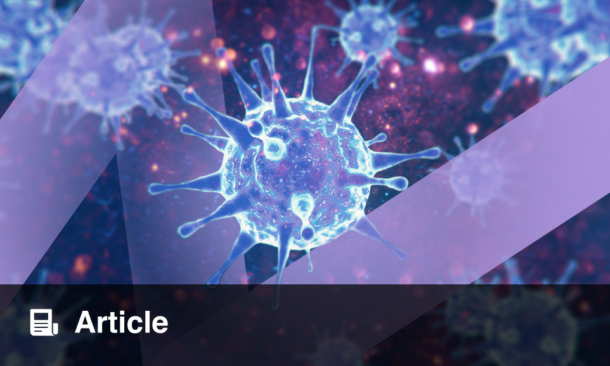Stephan Herzig | Institute for Diabetes and Cancer IDC, Helmholtz Center Munich, Neuherberg, Germany; Joint Heidelberg-IDC Translational Diabetes Program, Heidelberg University Hospital, Heidelberg, Germany; German Center for Diabetes Research (DZD), Neuherberg, Germany; Chair Molecular Metabolic Control, Technical University of Munich, Germany
Citation: EMJ Diabet. 2025;13[1]:70-71. https://doi.org/10.33590/emjdiabet/DCNR8007
![]()
Can you discuss your journey to get to where you are today, as Director and Department Head of the Helmholtz Diabetes Center, Munich, Germany, and Director of the Institute for Diabetes and Cancer at Helmholtz Center Munich, Neuherberg, Germany?
After obtaining my PhD from the University of Göttingen, Germany, in 1999, I moved to the USA for postdoctoral training at the Salk Institute for Biological Studies, La Jolla, California, USA. In 2003, I relocated to Germany to establish an independent junior group at the German Cancer Research Center (DKFZ), Heidelberg, Germany, where I was promoted to Department Head in 2010. In 2012, I became a Full Professor at the University of Heidelberg, Germany, and eventually accepted an offer from Helmholtz Munich, Neuherberg, Germany, in 2015 to establish a new research institute on diabetes and cancer. In 2018, I became Director of the Helmholtz Diabetes Center, which now comprises 11 institutes and a total staff of >600, dedicated to diabetes and metabolism research. Since 2020, I have also been Research Director at Helmholtz Munich and part of the management board.
What is it about diabetes, its complications and its interactions with other metabolic disorders that initially piqued your interest, and has led you to dedicate your studies to it, publishing nearly 200 papers and receiving multiple awards, including the 2022 Werner Creutzfeldt Prize and the 2023 Camillo Golgi Prize from the European Association for the Study of Diabetes (EASD)?
While preventing obesity and diabetes is of critical importance in the first place, the reality is that millions of people develop the full-blown disease. The long-term complications eventually determine the patient’s quality of life and their life expectancy. From a research perspective, complications are an exciting topic, as it is still not possible to drive an existing complication into remission, such as an atherosclerotic plaque or tissue fibrosis. There are also new, what we call ‘emerging’ complications, including lung fibrosis, cancer and cancer cachexia, for which the mechanistic links remain largely unexplored. For these two reasons, I find the area of complications not only clinically relevant but also extremely challenging and exciting.
A highlight in your career was your discovery of the cooperative control of gluconeogenesis by glucagon and glucocorticoid hormones through the CREB–PGC1 axis, improving understanding of diabetic fasting hyperglycaemia back in 2001. Could you describe the work that went into this discovery and how it has shaped the landscape of your work since?
This initial work was driven by a long-lasting question in the field: how and why do two hormonal pathways, the glucagon and glucocorticoid pathways, synergise to induce hepatic de novo glucose production during fasting? The glucagon-dependent induction of cofactor PGC1 and its physical interaction with the glucocorticoid receptor eventually provided a molecular-level explanation for this longstanding mystery. From these studies, I learned several things that went on to shape my career and define what I now refer to as ‘molecular metabolic control’:
Manipulating only a single molecule can significantly impact systemic metabolism.
Proper fasting physiology is important for metabolic health. Overactivation of the PGC1 pathway, for example, triggered hyperglycaemia, as seen in diabetes.
The liver is a powerful organ in overall systemic energy homeostasis.
These findings became guidelines for my subsequent studies, with a major emphasis on defining the molecular underpinnings of metabolic diseases, and eventually developing corresponding therapeutic modalities. Because of this early work, we now have a new class of RNA therapies in the pipeline, targeted to restore proper fasting metabolism. Recent clinical work has shown that fasting-based lifestyle interventions, including intermittent fasting, can restore kidney function in patients with chronic kidney disease.
Do you have any exciting ongoing research? What are the expected results of it?
Beyond the mentioned ‘fasting-based’ RNA therapies, we have expanded our research in recent years to investigate conditions involving involuntary body wasting, particularly cancer cachexia. It turns out that the severity of cachexia in patients with tumours is determined by pre-existing diabetes. In this sense, cancer cachexia can be seen as one of these ‘emerging’ diabetes complications. In this context, we have just completed a study in which we defined the liver’s response to cancer cachexia, identifying secreted hepatic factors that can cause body wasting in the periphery. This again highlights the importance of the liver in metabolic health and defines new therapeutic targets for a metabolic wasting disease, for which no FDA-approved drug exists so far.
What are the key challenges in diabetes that you and your team are trying to solve? And what might be the implications for patients if you see success?
It has become clear that diabetes cannot be subdivided only into Type 1 and Type 2. There are five to six different subtypes of patients. A major challenge for the entire field in the coming years will be the precise molecular-metabolic definition of these subtypes, the understanding of how to treat patients from different subtypes, and the characterisation of the impact of subtypes on the development of long-term complications. In this context, we will focus on the development of subtype-specific therapies and particularly aim to establish modalities to drive existing complications into remission. This would have a major impact on the life expectancy of patients and on associated healthcare costs.
Do you see any opportunities to collaborate with other teams in Europe, or further afield, to help address these challenges?
We are already engaged in multiple international, European, and worldwide collaborations at different levels, and will continue to strive to expand these networks in the future. Ultimately, the challenges can only be addressed through global cooperation, and the Helmholtz Diabetes Center, as one of the world’s largest metabolism research institutes, is well positioned to fulfil these tasks and requirements.
You have had a thrilling career so far. If you could pick out your greatest success, what would it be, and why?
In a recent international review, the Helmholtz Diabetes Center was rated ‘internationally leading’ by a high-profile panel of scientists. I am very proud of this because our team not only contributed to the scientific success, but all the work dedicated to the management of the centre, strategic planning, and coordination of all teams was also obviously recognised by our peers at a global level. So, all the work over many years has somehow paid off in the end.








